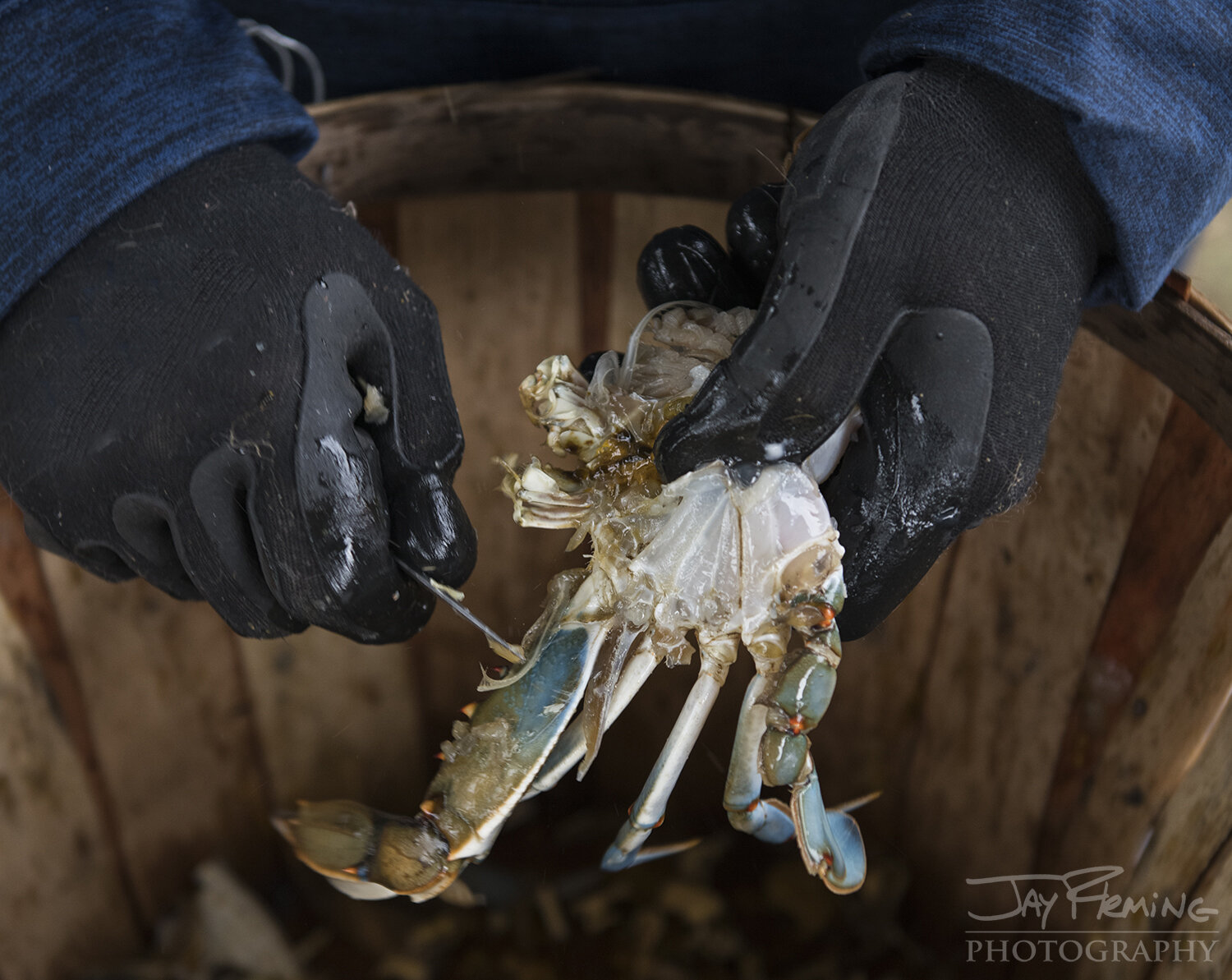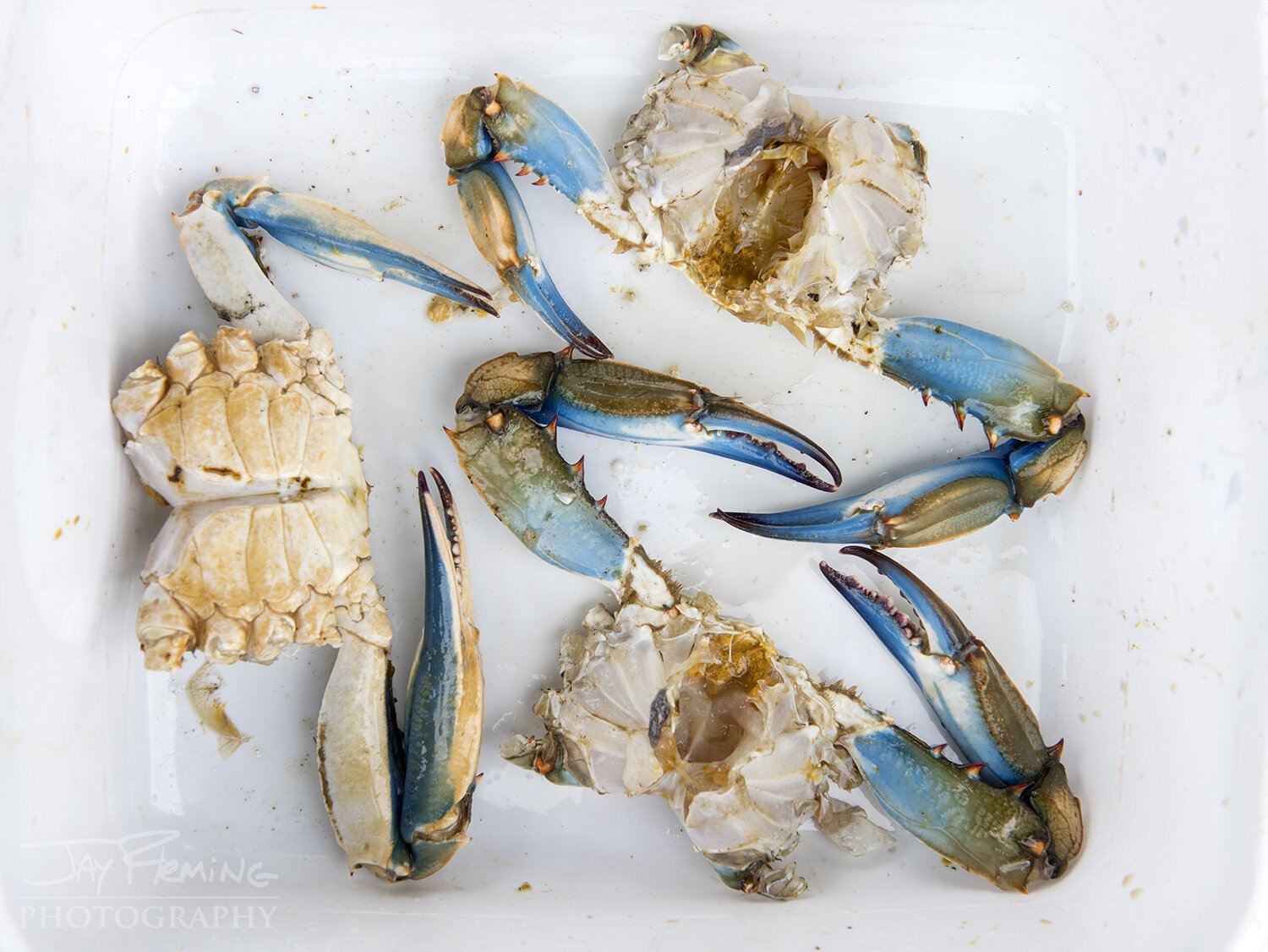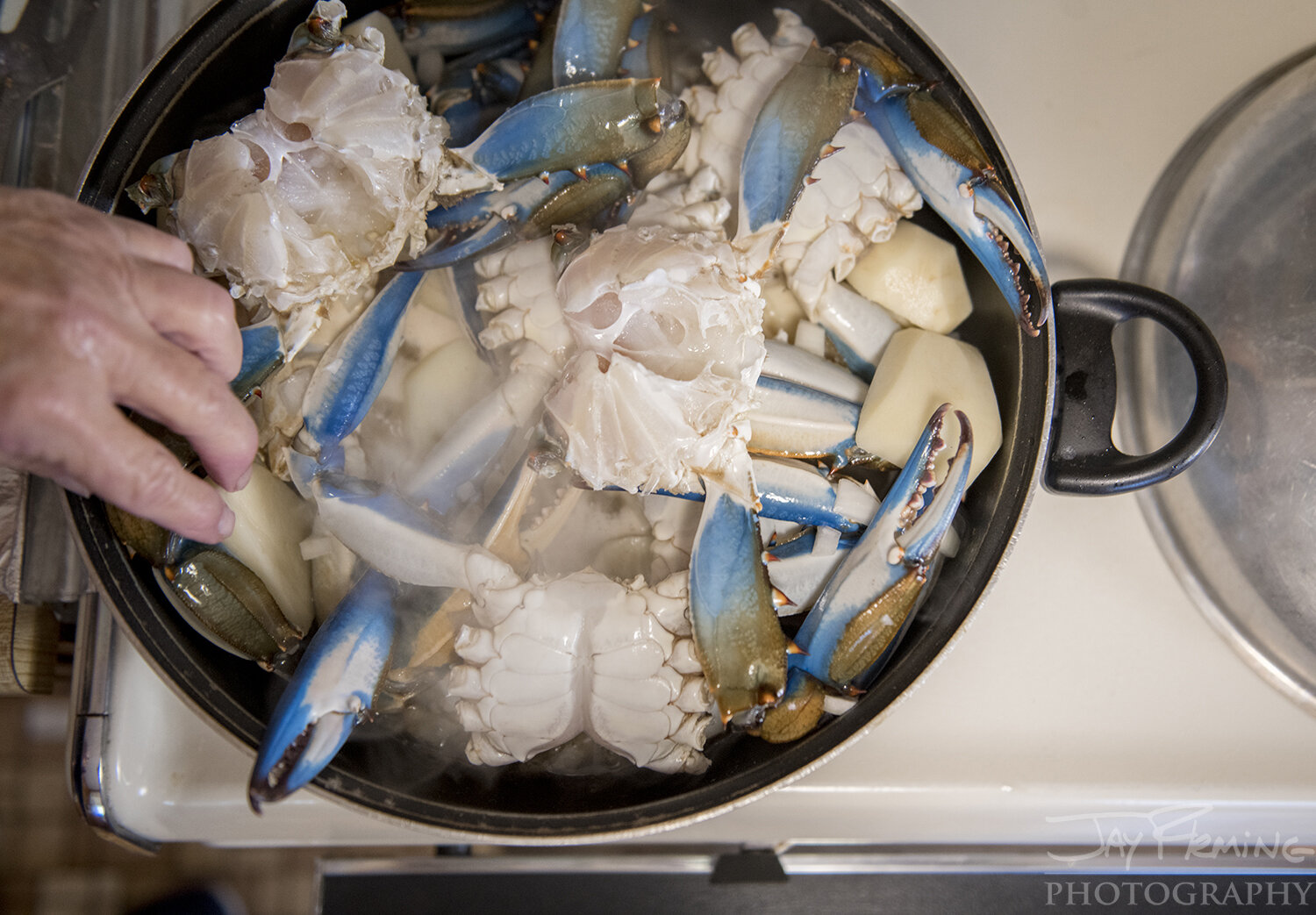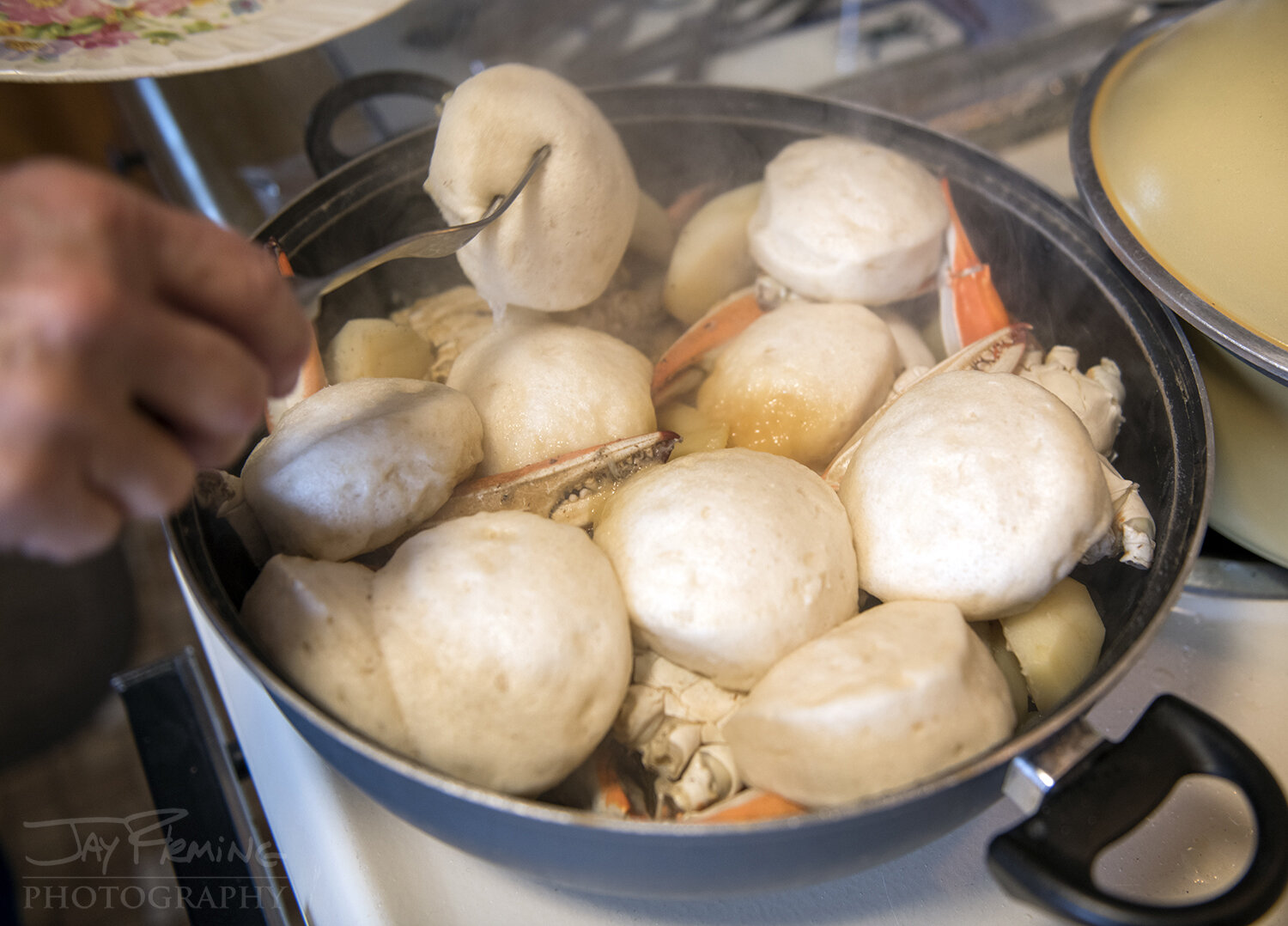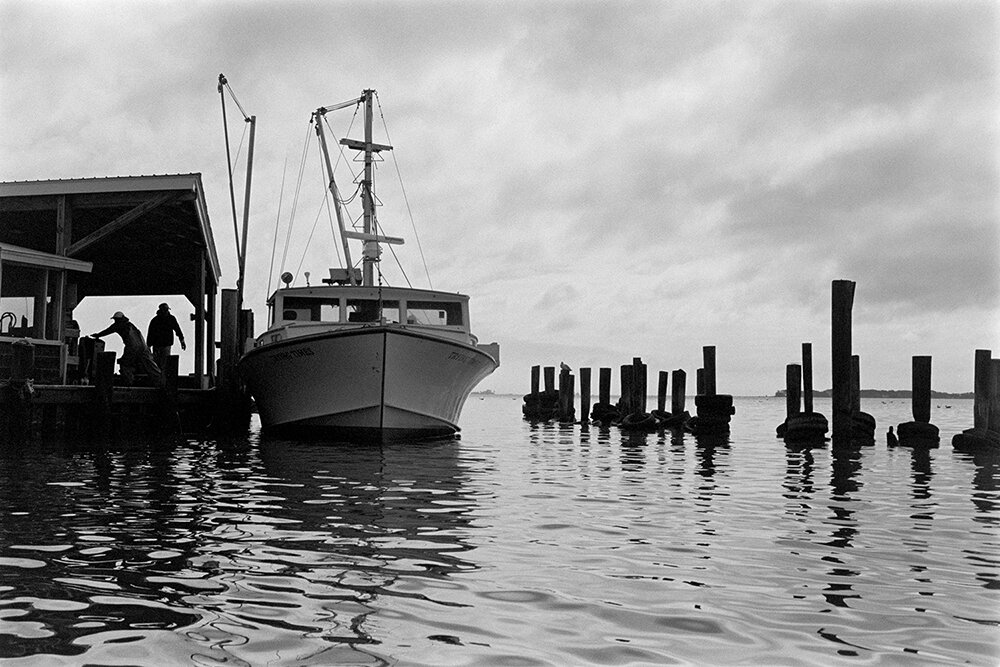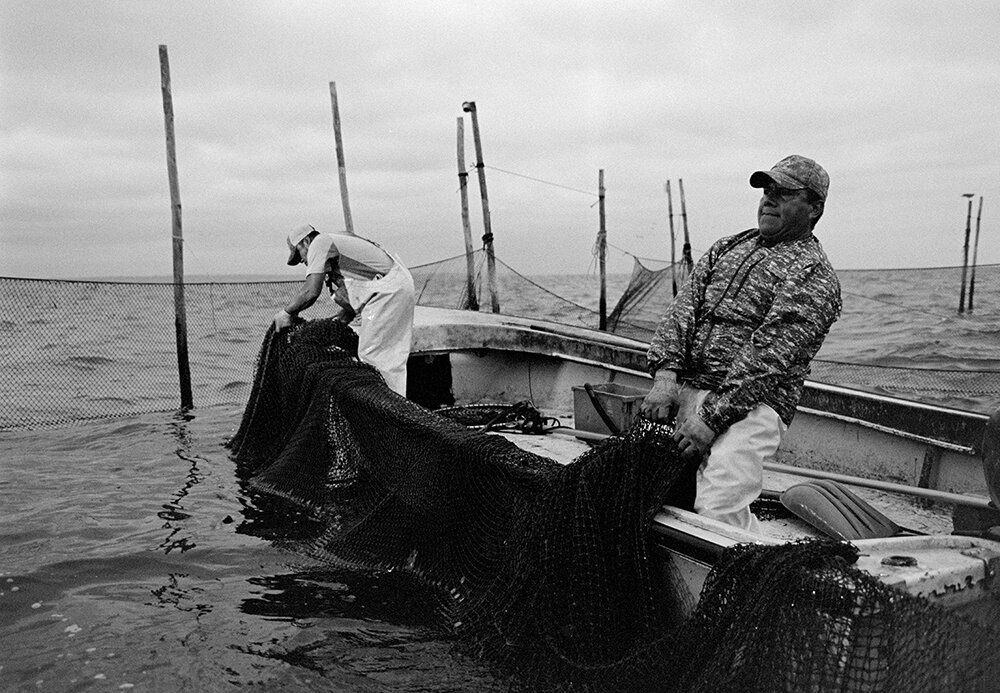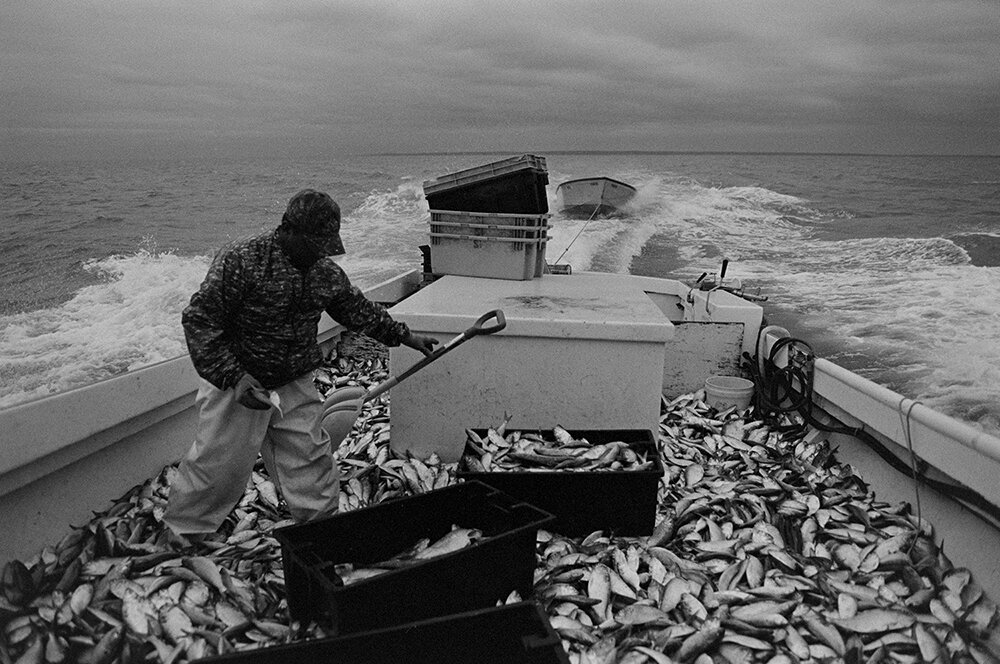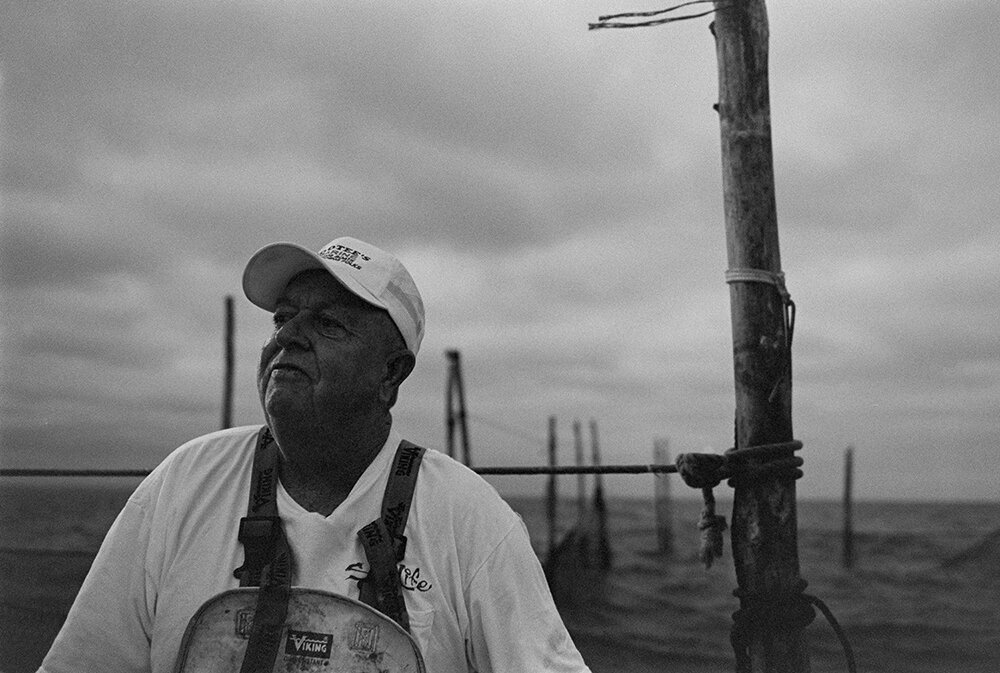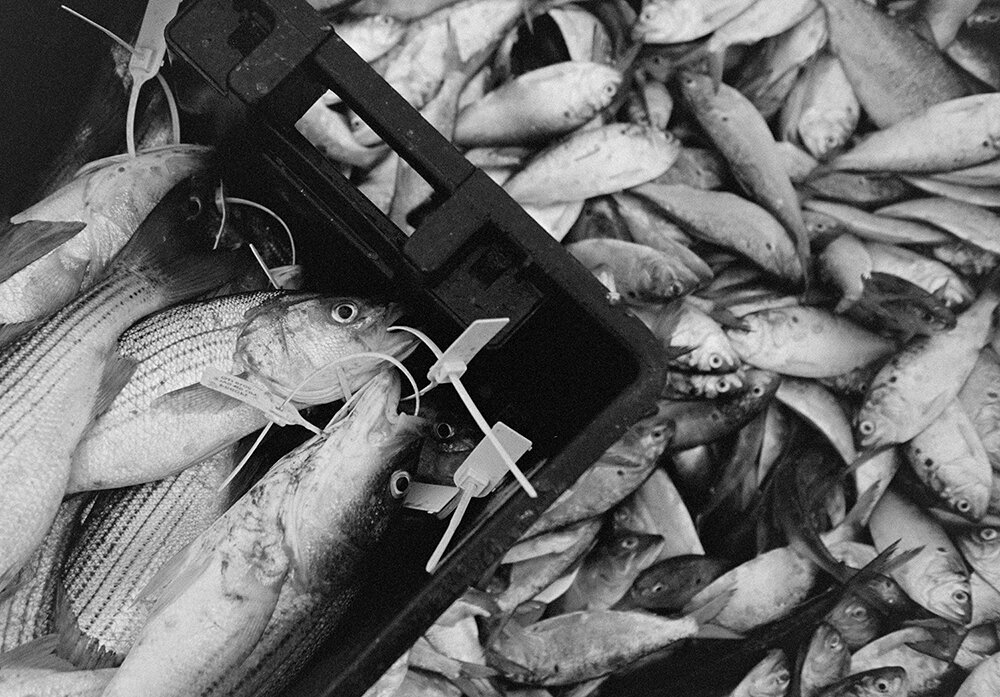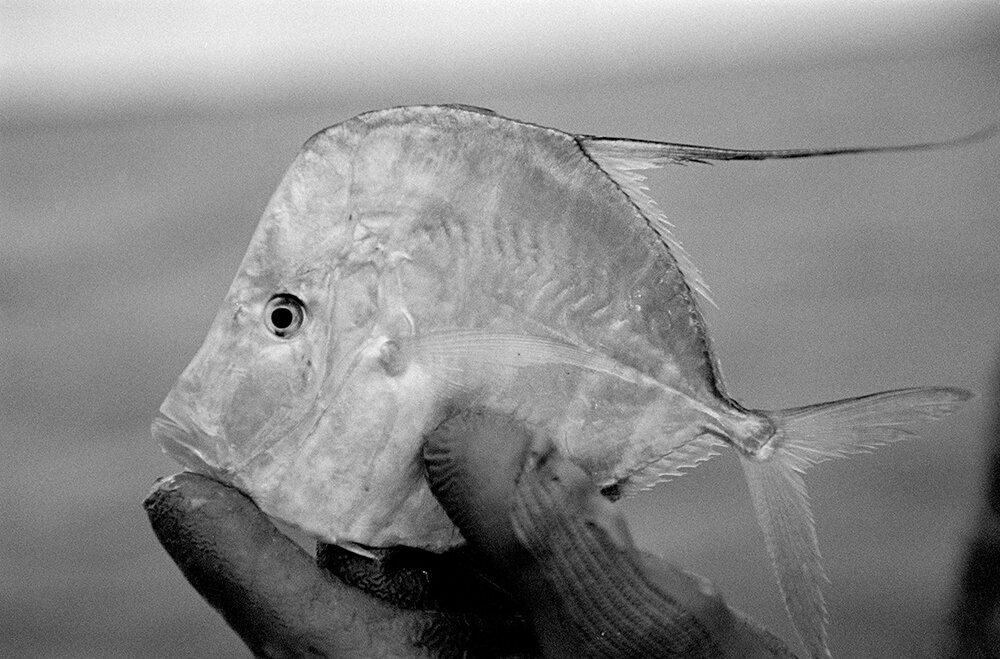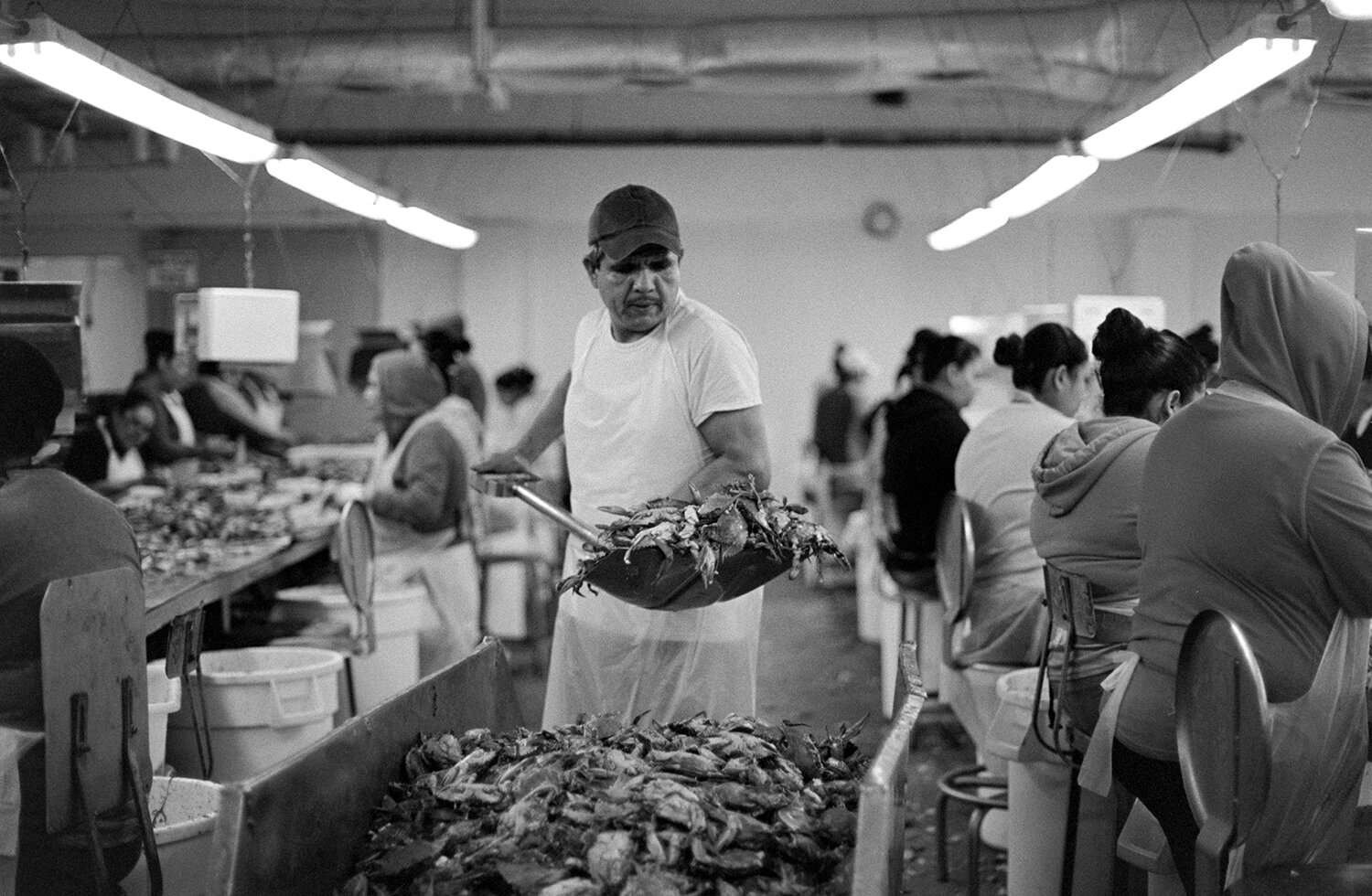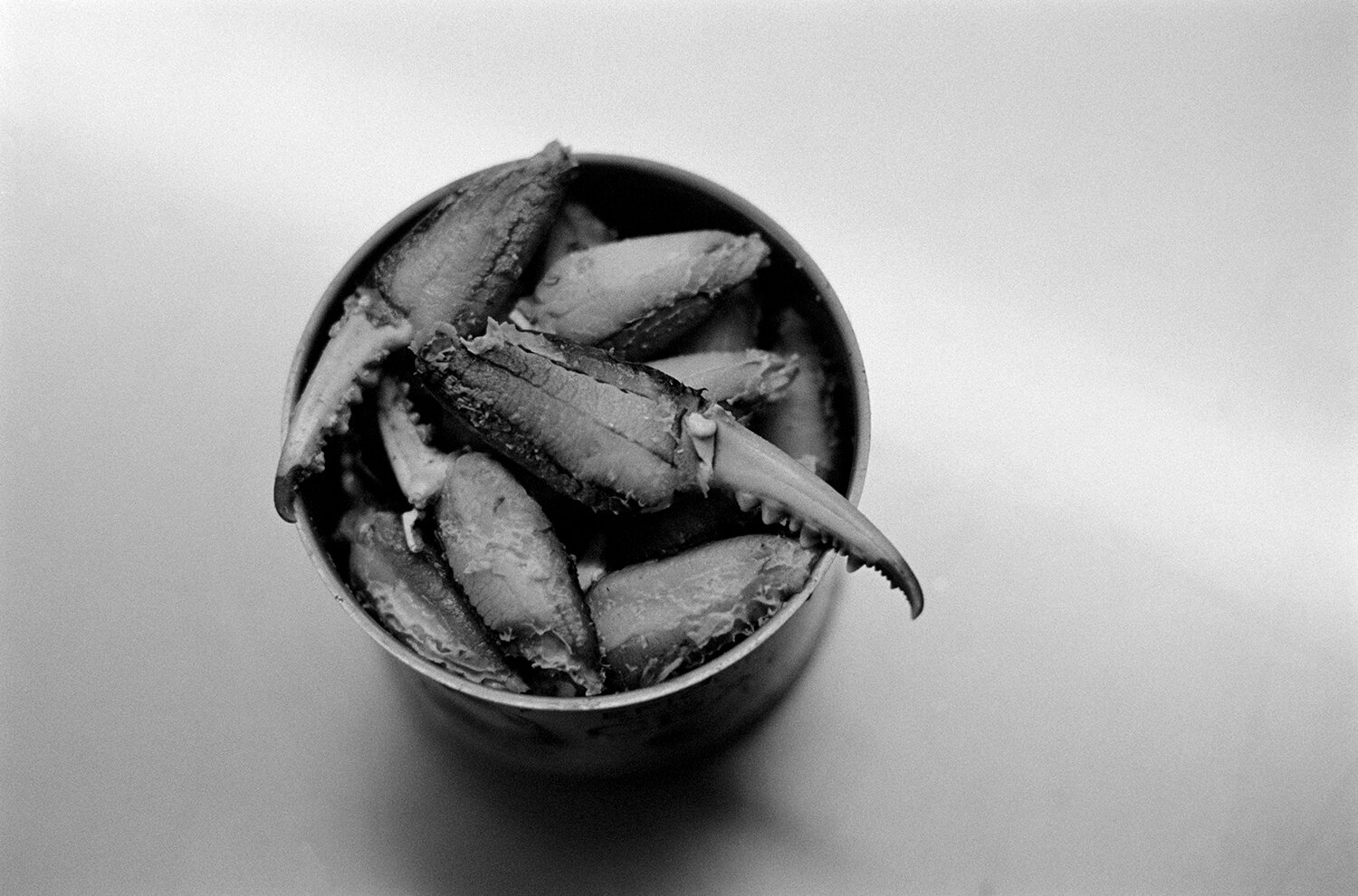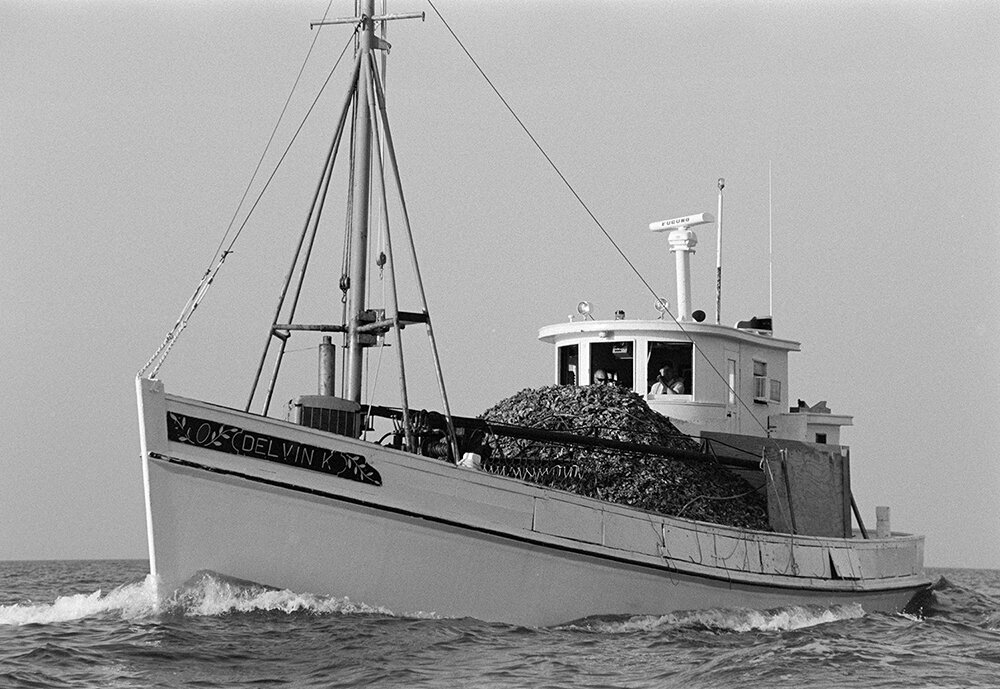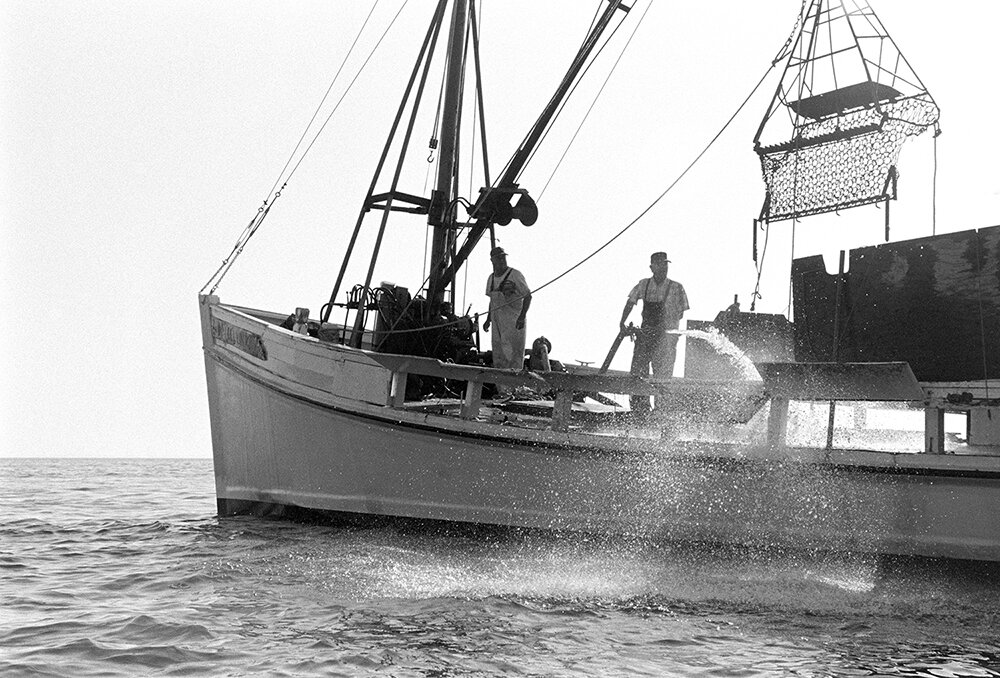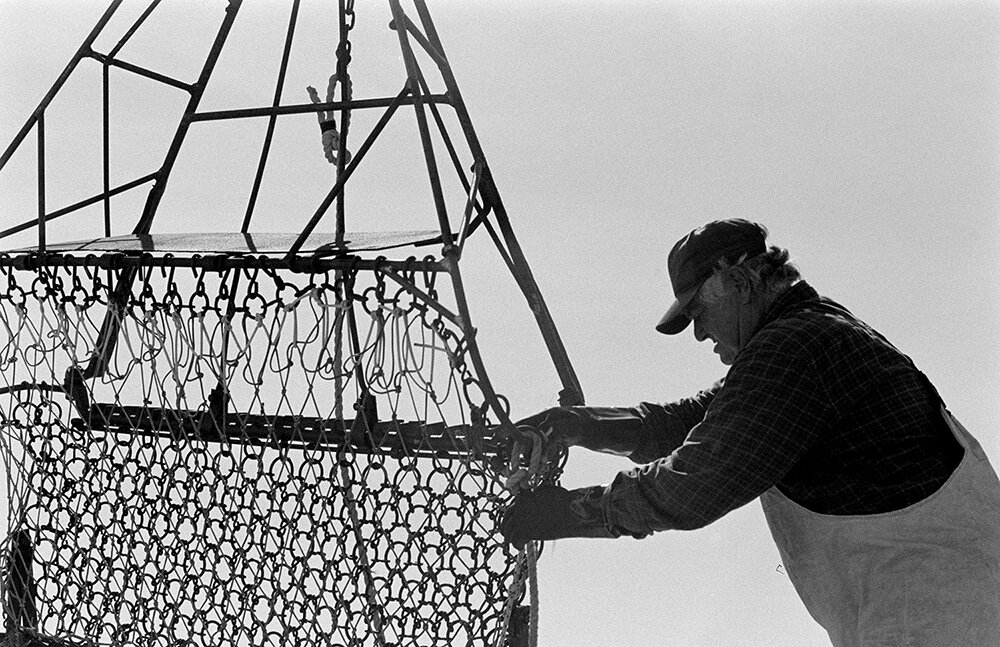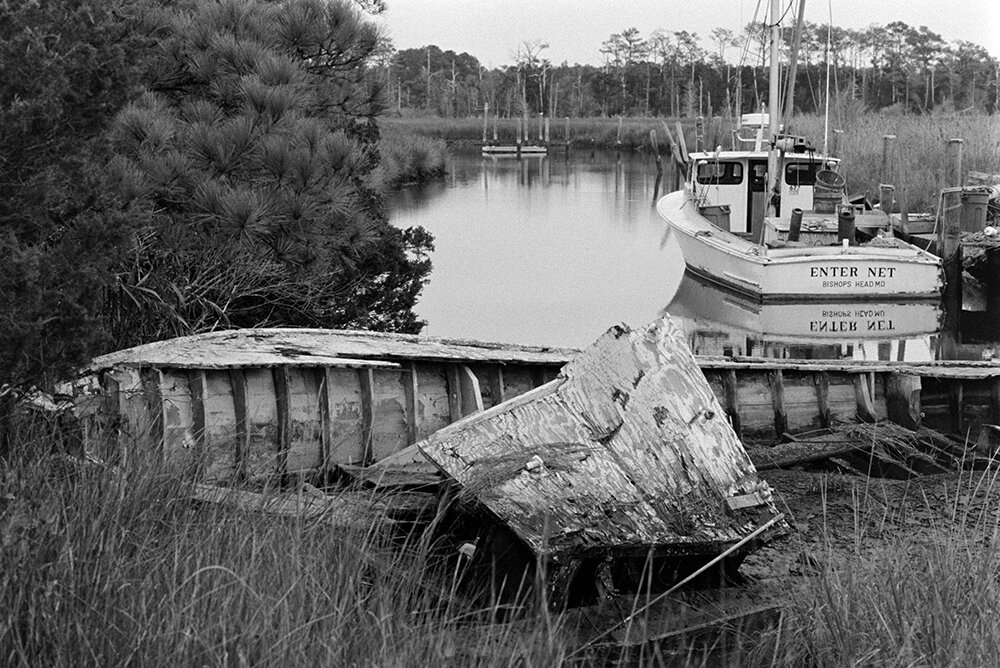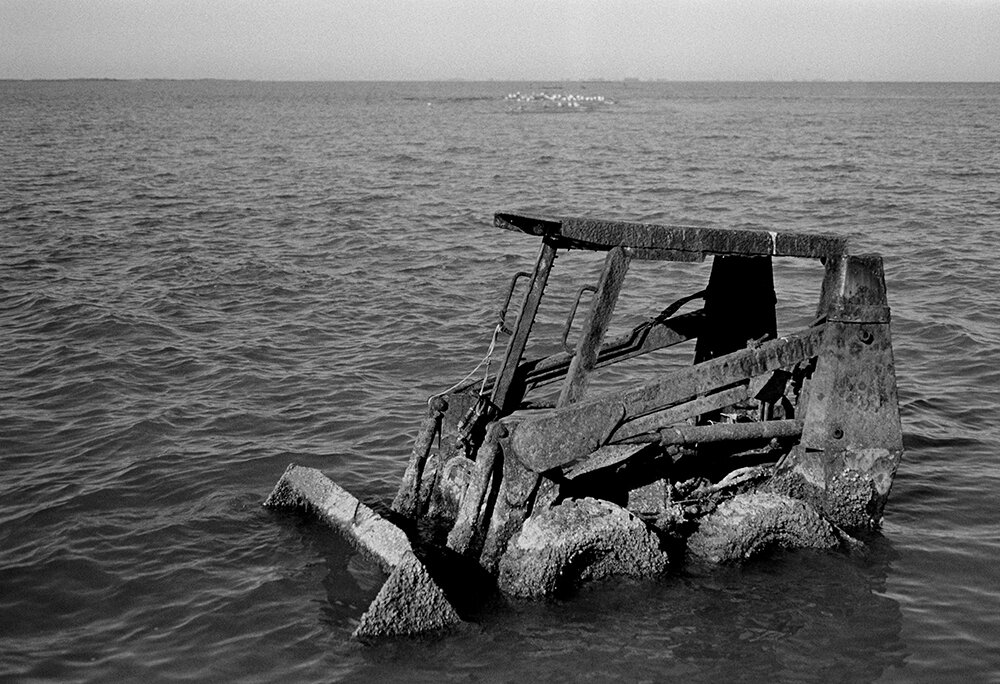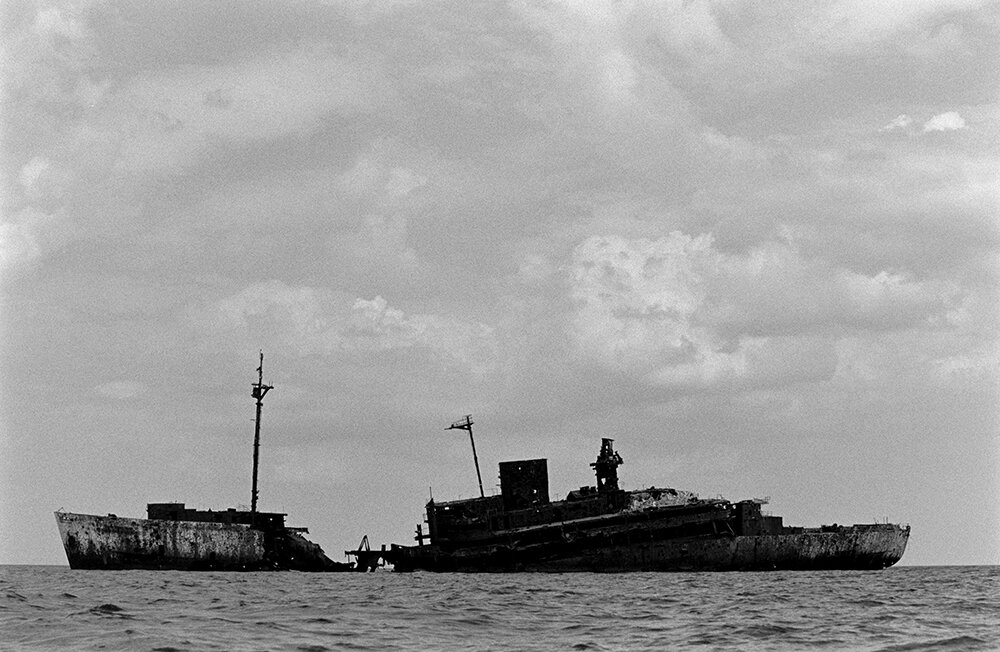words and photographs by Jay Fleming
Originally published in Edible Delmarva, Winter 2018
‘Stewed Jimmies’ is a traditional fall and early winter dish from Smith Island, Maryland - an isolated offshore island community in the Chesapeake Bay, nine miles west of Crisfield. Every fall, as water temperatures begin to cool, crab potters working in the deeper waters of the mainstem of the Chesapeake and Tangier Sound will start to catch large male ‘Jimmy’ crabs as they move down the bay in preparation for winter hibernation.
Most watermen will sell any crabs that they catch for picking or for the ‘basket market,’ so bringing crabs home for eating cuts directly into their revenue for the season. But many watermen will save the largest of the Jimmies – true #1’s – for this unique seasonal dish.
The crabs have been building up fat reserves to help them survive three to four months buried in the bottom of the bay. The sweet flavor from the fat, combined with the ‘fullness’ of the meat in the body, make the late-season crab a favorite among Chesapeake connoisseurs.
The love of food and tradition is the common glue for most islanders. On the day we gathered in Janice Marshall’s kitchen, it was like a reunion. Islanders who live on and off the island made a point to come over for this special occasion and keep the tradition of ‘Stewed Jimmies’ very much alive and well.
Stewed Jimmies
Recipe By Janice Marshall, Tylerton, Maryland
When the dish is complete, the crab meat takes on a whole new flavor from the bacon fat and onions. The potatoes and dumplings soak in all of the flavor from the crab gravy. As the Smith Islanders say, it’s not hard to “fill yer belly with a few of these big jimmies and all of the fixins”
- INGREDIENTS - SERVES 4 to 6 -
25 Hard Crabs
6 Potatoes, cut in half
Bacon Fat
1 large white onion, diced
1 cup water
Dumplings (use your favorite recipe)
3 heaping tablespoons flour
Salt and Pepper
- DIRECTIONS -
Clean the crabs, take off top shell (backs), remove legs, gills and innards, brush the crabs and wash the crab bodies out with a hose. Cleaning the crabs is a messy and time-consuming job - the fall crabs are what the islanders describe as “tough as leather.”
In a large pan, use bacon fat and fry the diced onion. Once onion is cooked, add 1 cup of water, cleaned crabs and potato halves. Cover and cook on med/high heat for approximately 35-40 minutes. Add dumplings after 35 minutes and cook for an additional 10 minutes to heat up. Remove crabs, dumplings and potatoes and add flour to thicken the water to make a ‘crab gravy’. Stir gravy until it thickens.
To eat, pick crabs as if they are hard crabs to get meat out of the body and claws. Smash the potatoes with a fork on plate, mix it in with the crabmeat and dumplings and dump hot gravy on top.
Removing the top shell of the crab.
Cleaning the crabs after removing the top shell.
Spraying out the mustard of the crab with a freshwater hose.
Cleaning the bodies of the crab.
Adding crabs to the large pan with onions cooked in bacon fat and uncooked potatoes.
Janice Marshall preparing to add dumplings to steamed crabs.
Removing dumplings after cooking for 10 minutes.
The plated dish. Dumplings, potatoes, crabs and crab gravy served from separate dishes.



